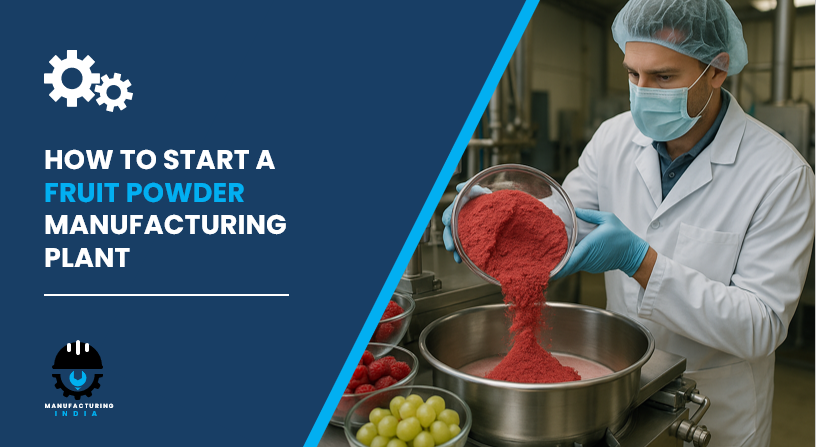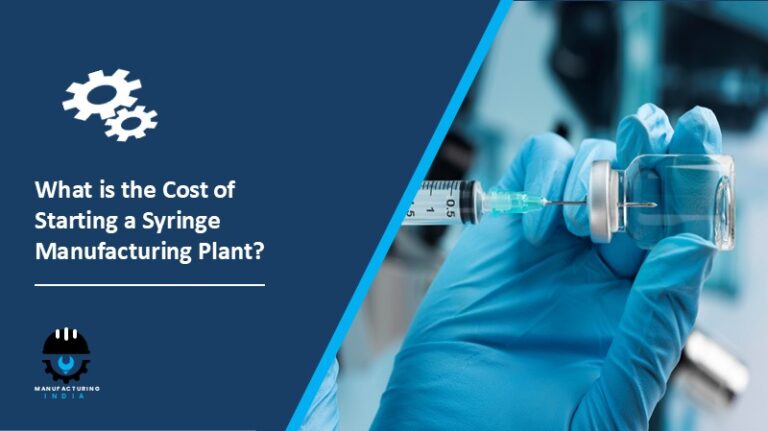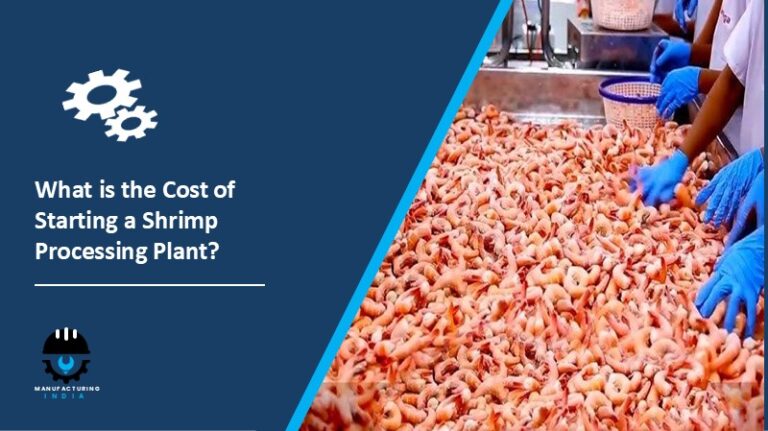
The fruit powder manufacturing industry forms the backbone of the global food processing and nutraceutical sector, which serves various segments from beverage manufacturers to dietary supplement producers. Therefore, with constant growth in health consciousness and natural food product adoption, establishing a fruit powder manufacturing plant presents a promising business opportunity.
The fruit powder manufacturing industry is a complex and capital-intensive industry with great potential for new entrants. However, this venture requires careful planning, significant investment, and compliance with food safety regulations. From raw material sourcing to regulatory requirements, every phase of the business is to be conducted with utmost precision. Businesses can streamline this process by leveraging on-demand professional resources, which provide feasibility analysis, cost estimations, and requirements for technical necessities.
Step-by-Step Guide to Setup Fruit Powder Manufacturing Facility
Step 1: Conducting Market Research and Feasibility Study
Analyzing the Market:
Beyond traditional business segments such as instant beverage powders and baking ingredients, enterprises should consider emerging and upcoming trends. For example, demand for organic certified fruit powders with clean label credentials is soaring, and firms have come up with dedicated product lines featuring superior nutritional retention and natural color preservation.
Another aspect is functionality, where the demand for spray-dried superfruit powders and freeze-dried premium variants is rising. Several leading brands have announced initiatives for transitioning to sustainable sourcing practices and partnering with certified organic farming cooperatives.
Analyze the strategies and advanced technologies offered by significant food processing manufacturers in the market. For instance, advanced drying technologies are designed for maximizing nutrient retention and flavor preservation. These use sophisticated temperature control and vacuum systems to achieve superior quality and extended shelf life.
Businesses need to monitor industry shifts, technological advancements, and strategic developments constantly to gain a competitive edge. Expert insights can help enterprises stay informed about market trends, competitor strategies, and innovation landscapes. Companies can make data-driven decisions to enhance their market positioning and drive sustainable growth by using tailored research.
A robust study is essential, and businesses should also consider regional factors. For instance, a plant in tropical regions might focus on mango, pineapple, and papaya powders due to raw material availability, while a temperate zone plant might cater to berry and apple powder varieties with extended processing seasons.
Estimate the capital needed for land acquisition, infrastructure development, machinery, working capital, and research and development. Recent investments in the food processing sector highlight the significant financial commitments involved in this industry.
Step 2: Business Plan Development
Include a comprehensive financial model, considering initial investment and operating costs. Address sustainability initiatives, which can attract investors and customers. For instance, leading companies are working towards goals of reducing food waste through utilization of surplus and imperfect fruits. Many have targeted achieving zero-waste operations as part of their long-term environmental vision.
Business Model: Businesses should plan whether to focus on manufacturing single-fruit powders, multi-fruit blends, organic certified products, private labeling, contract manufacturing, or a combination of these approaches and build a business model accordingly.
Funding Strategy: Outline potential funding sources, including equity investment, bank loans, government grants for food processing manufacturing, or strategic partnerships with beverage and nutraceutical companies.
Production Capacity: Define your target production volume based on market analysis and available resources, considering whether to start with small-scale operations or aim for large-scale production.
Marketing and Sales Strategy: Develop plans for branding, distribution channels including food manufacturers, nutraceutical companies, retail packaging, e-commerce platforms, and direct-to-consumer sales, and customer acquisition through digital marketing and product sampling programs.
Risk Assessment: Identify potential risks, such as seasonal fruit price fluctuations, raw material quality variations, regulatory changes in food safety policies, or challenges in cold chain logistics, and propose mitigation strategies.
Step 3: Navigating Legal Requirements and Obtaining Necessary Permits
Compliance with legal and regulatory frameworks is essential. Key steps include:
Business Registration: Register your company in accordance with local laws and food manufacturing regulations.
Food Safety Approvals: Obtain necessary food safety certifications, as fruit powder manufacturing involves strict hygiene standards and quality control that must meet regulatory requirements for food-grade products.
Factory Licenses: Secure licenses required for operating a food processing facility, including health department approvals and food safety authority clearances.
Quality Certifications: Aim for certifications related to food safety management systems, HACCP compliance, organic certifications for organic products, and kosher or halal certifications to ensure product acceptance and facilitate market expansion.
Export Certifications: Obtain certifications such as ISO standards for quality management, food industry specific certifications like FSSC, BRC, or IFS, and laboratory approvals for nutritional analysis and microbial testing.
Step 4: Selecting an Optimal Location and Develop Infrastructure
Choosing the right location is critical for operational efficiency. Consider factors such as:
Proximity to Raw Materials: Access to fruit growing regions, farmer cooperatives, wholesale fruit markets, and cold storage facilities. Proximity to agricultural belts reduces transportation costs, ensures freshness, and minimizes post-harvest losses.
Logistics and Transportation: Ensure good connectivity to key markets, suppliers, and distribution facilities. Access to highways, refrigerated transport networks, and logistics hubs is essential for distributing finished products and receiving fresh raw materials.
Utilities Availability: Reliable access to electricity for continuous processing operations, high-quality water for washing and processing, steam generation systems, compressed air facilities, and adequate space for cold storage, processing areas, and warehousing.
Land Size: Adequate space to accommodate current operations including fruit receiving areas, washing and sorting sections, processing halls with controlled environments, drying facilities, packaging rooms, quality control laboratories, cold storage warehouses, and future expansions for increased capacity.
Step 5: Procuring Advanced Machinery and Quality Raw Materials
Investing in state-of-the-art machinery ensures efficient production and high-quality output. Essential equipment includes:
Raw Material Processing Equipment: Fruit washing and cleaning systems, inspection conveyors with sorting stations, peeling and cutting machines, pulping and juice extraction equipment, seed and stone removal systems
Pre-treatment Systems: Blanching equipment for enzyme inactivation, sulphiting units for color preservation, sugar adjustment systems, pH control equipment, homogenizers for consistency
Drying Equipment: Spray dryers for instant powder production, freeze dryers for premium quality products, vacuum dryers for heat-sensitive varieties, tray dryers for small-scale operations, drum dryers for specific applications
Post-drying Processing: Grinding and milling equipment for particle size reduction, sieving machines for uniform particle classification, mixing equipment for blended products, anti-caking agent dosing systems
Packaging Equipment: Automatic pouch filling and sealing machines, nitrogen flushing systems for extended shelf life, metal detectors and quality inspection systems, labeling machines, carton sealing equipment
Quality Control Equipment: Moisture analyzers, particle size analyzers, color measurement instruments, nutritional testing apparatus, microbial testing facilities, sensory evaluation laboratories
Supporting Infrastructure: Cold storage rooms with temperature control, water treatment and purification systems, steam boilers, compressed air systems, effluent treatment plants, warehouse management systems
Raw Material Requirements:
Source quality fruits from reliable suppliers, including fresh seasonal fruits like mangoes, berries, apples, citrus fruits, tropical varieties, food-grade additives such as anti-caking agents, maltodextrin carriers for spray drying, natural preservatives if required, and appropriate food-grade packaging materials including moisture-barrier pouches, aluminum foil laminates, and containers that ensure product protection and extended shelf life.
Step 6: Building a Skilled Workforce
Recruiting and training skilled personnel is vital. Key roles include:
Food technologists and process engineers for overseeing production processes, optimizing drying parameters, maintaining nutritional quality, and ensuring equipment efficiency.
Quality assurance specialists to ensure products meet food safety standards, nutritional specifications, and regulatory compliance requirements.
R&D team for developing new fruit powder varieties, improving processing techniques, creating innovative blends, and enhancing product characteristics like dispersibility and flavor profiles.
Sales and marketing professionals to drive market penetration, B2B client acquisition, distributor network development, brand recognition, and digital presence in both industrial and retail segments.
Food safety officers to ensure adherence to HACCP principles, GMP compliance, and certification requirements.
Production line workers and technicians trained in food handling, hygiene protocols, machine operation, quality inspection procedures, and sanitation practices.
Companies with strong reputations in the food processing industry have established comprehensive training programs to develop skilled workers, contributing to their reputation for quality and food safety excellence.
Step 7: Implementing the Production Process
The fruit powder manufacturing process involves multiple stages, which include:
Raw Material Reception and Inspection: Receiving fresh fruits from suppliers and conducting incoming quality control checks including visual inspection for ripeness and defects, brix measurement for sugar content, pH testing, microbial contamination screening, and sorting by quality grade.
Washing and Cleaning: Thorough washing with potable water, removal of dirt and surface contaminants, sanitization with food-grade disinfectants, final rinse with clean water, and inspection for cleanliness.
Preparation and Pre-treatment: Peeling, deseeding, and cutting operations, blanching to inactivate enzymes and preserve color, pulping or pureeing to desired consistency, addition of carriers or stabilizers if required for spray drying, homogenization for uniform composition.
Drying Process: Spray drying where fruit puree is atomized in hot air chambers creating instant powder, freeze drying involving freezing followed by sublimation under vacuum for premium products, vacuum drying at reduced pressure and temperature for heat-sensitive fruits, continuous monitoring of inlet and outlet temperatures, moisture removal to optimal levels ensuring stability.
Post-drying Processing: Cooling dried powder to ambient temperature, grinding or milling to achieve desired particle size, sieving to remove lumps and ensure uniformity, addition of anti-caking agents to prevent clumping, blending different batches for consistency or creating multi-fruit formulations.
Quality Inspection: Finished powders undergo rigorous quality checks including visual inspection for color and texture, moisture content analysis typically maintained at specific levels, particle size distribution measurement, solubility and dispersibility testing, nutritional analysis for vitamins and other components, microbial testing for safety assurance, sensory evaluation for flavor and aroma, heavy metal and pesticide residue testing.
Packaging and Storage: Approved products are packaged in moisture-proof materials with nitrogen flushing to prevent oxidation, proper labeling including nutritional information, ingredients list, batch codes for traceability, manufacturing and expiry dates, storage instructions, and stored in controlled environment warehouses before distribution to customers.
Step 8: Establishing Marketing and Distribution Channels
A robust marketing and distribution strategy is essential for establishing a strong presence in the market. Consider the following approaches:
Food and Beverage Industry: Collaborate with beverage manufacturers, bakery chains, confectionery companies, ice cream manufacturers, and food service operators to ensure steady bulk orders and long-term supply contracts.
Nutraceutical and Health Sector: Partner with dietary supplement manufacturers, protein powder companies, health food brands, and functional food producers to supply high-quality fruit powder ingredients.
E-commerce Channels: Utilize both your own website and online marketplace platforms to reach retail consumers directly. Develop comprehensive digital marketing campaigns, leverage social media influencers and recipe content, and create educational materials about health benefits and usage applications.
Retail Distribution: Establish relationships with health food stores, organic retailers, specialty food outlets, and mainstream supermarket chains through appropriate packaging formats for consumer sales.
B2B Opportunities: Supply fruit powders to other brands through white-labeling or private label arrangements, partner with food ingredient distributors, collaborate with export houses, or supply to institutional buyers like hotels and restaurants.
Export Opportunities: Study international markets with growing natural ingredient demand and comply with their specific food safety standards, organic certification requirements, labeling regulations, and quality specifications for successful market entry.
Step 9: Ensuring Compliance with Safety and Environmental Standards
Fruit powder manufacturing involves strict food safety protocols and environmental considerations, making regulatory compliance crucial. Key measures include:
Worker Safety: Implement strict hygiene protocols and GMP compliance, provide personal protective equipment including hairnets, gloves, aprons, and safety footwear, and train employees on food safety, equipment operation, chemical handling for cleaning agents, and workplace hazards.
Food Safety Management: Establish comprehensive HACCP systems identifying critical control points, implement proper sanitation schedules, maintain temperature and time logs, conduct regular hygiene audits, and train staff on food safety practices and contamination prevention.
Hygiene and Sanitation: Maintain strict cleaning protocols for all equipment and surfaces, implement pest control programs, ensure proper handwashing and personnel hygiene facilities, control access to processing areas, and maintain air quality through proper filtration.
Waste Management: Establish proper treatment systems for fruit processing waste and peel disposal through composting or animal feed conversion, manage wastewater through effluent treatment, implement water recycling systems, and minimize packaging waste through sustainable practices.
Energy and Resource Efficiency: Adopt energy-efficient drying equipment, implement heat recovery systems, optimize water usage through recycling and conservation, consider renewable energy sources like solar power to reduce operational costs and environmental footprint.
Governments and regulatory bodies worldwide are increasingly enforcing stringent food safety and environmental regulations. Leading food processing companies have pledged to reduce their environmental impact by adopting sustainable manufacturing practices and zero-waste initiatives.
Step 10: Planning for Future Expansion and Innovation
Once the fruit powder plant is fully operational, focus on scaling up production and expanding market reach. Key strategies include:
Increasing Production Capacity: Expand facilities by adding production lines, upgrade to higher-capacity automated equipment, install additional drying systems to handle increased volumes, or establish additional manufacturing facilities in different regions to meet growing market demand.
Launching New Products: Invest in research and development to create innovative products, such as exotic superfruit powders, organic certified product lines, custom blends for specific applications, functional fruit powders with added nutrients, or instant fruit drink mixes.
Diversification: Explore new markets such as vegetable powders, herbal extracts, spice powders, dehydrated food ingredients, or entry into ready-to-eat fruit snack segments using similar processing capabilities.
Technology Integration: Develop advanced features like microencapsulation for enhanced stability, improved dispersibility formulations, natural color retention technologies, extended shelf-life processing methods, or instant reconstitution properties for beverage applications.
Vertical Integration: Consider backward integration by establishing fruit farming operations, contract farming networks, cold chain logistics, or forward integration through branded retail products to reduce dependency on intermediaries and improve margins.
Strategic Partnerships: Consider collaborations with fruit grower associations, beverage brands for exclusive supply agreements, nutraceutical companies for specialized formulations, technology providers for equipment upgrades, research institutions for product development, or export partners to strengthen global presence.
Exclusive Insights: Unlock Hidden Market Opportunities
The rise of clean label and natural ingredients is reshaping the fruit powder industry, with manufacturers exploring opportunities in organic certification, non-GMO verification, and transparent sourcing practices to meet consumer demands for authentic natural products.
Advanced processing technology is a major focus, with companies investing in freeze-drying capabilities for premium segments, encapsulation technologies for stability improvement, instant dispersibility enhancements, and cold-processing methods that preserve maximum nutritional value.
Functional food ingredients are becoming increasingly important, with manufacturers developing fruit powders fortified with probiotics, protein-enriched variants, antioxidant-concentrated formulations, and immunity-boosting blends targeting health-conscious consumers.
Sustainability and waste reduction approaches including utilization of imperfect or surplus fruits, byproduct valorization for other applications, compostable packaging solutions, and comprehensive carbon footprint reduction programs are gaining traction among environmentally conscious manufacturers.
Customization and application development are emerging as differentiators, with specialized powders for specific industries like sports nutrition, infant food, senior nutrition, natural food coloring applications, and bespoke flavor profiles for unique product requirements.



